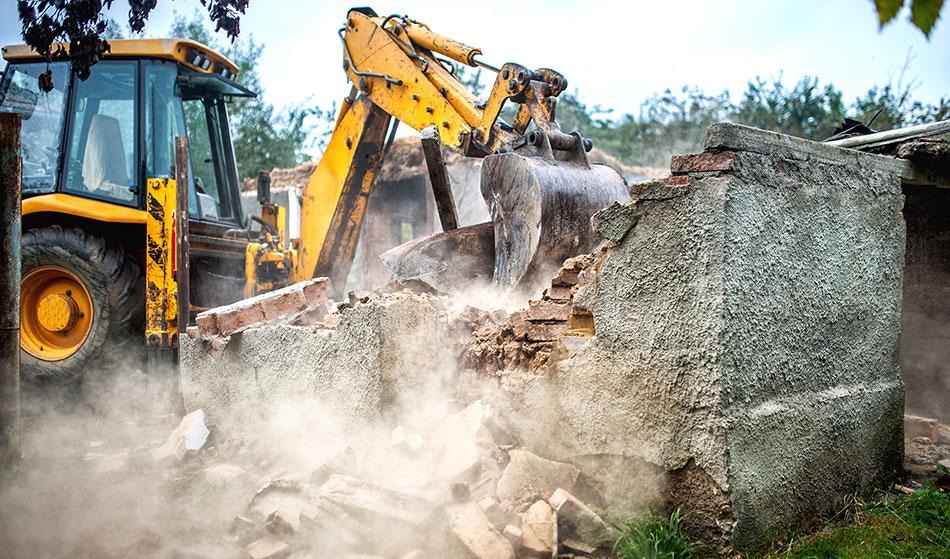
Image Credit: bogdanhoda/Shutterstock.com
At the end of a building's lifecycle, it continues to provide value. Through the selective disassembly of commercial and residential buildings, a crew can salvage a diverse variety of items like appliances, light fixtures, wood flooring, and similar components. In doing so, these materials can serve a future purpose.
Despite the benefits of deconstruction, the practice is far from mainstream. It takes longer than demolition, the costs are higher, and the extra time and effort are a deterrent to some organizations. Even so, reuse and recycling through deconstruction are cost-effective when a crew approaches the process correctly.
Furthermore, this strategy for removal is friendly to the environment — a high priority in today's climate. Construction companies should review the advantages of deconstruction for their future projects, taking the information below into account as they reconsider current practices.
Benefits for the Environment
Traditional demolition may leave concrete and other construction materials in the soil, limiting the area's potential. Crops and vegetation will prove far more difficult to grow on the site with the remaining debris, and unless the demolition plans include its removal, it may compromise the green reuse of vacant parcels.
Conversely, the deconstruction process reduces the amount of residual waste with careful disassembly. When complete deconstruction is possible, it's the most sustainable method for removing or renovating a building. Future projects on the site won't suffer the detrimental effects of demolition activity.
Instead, a crew can take materials with architectural value or reuse potential and conserve their available resources. These reuse and recycling opportunities allow them to profit from the items they salvage while diverting waste from landfills. As a context, deconstruction can result in 95% material reuse and recycling.
Benefits for the Company
Companies that engage in deconstruction may earn an additional source of revenue. When they sell their salvaged or reusable materials to various outlets, they enjoy the financial advantages of the process. This has caused momentum to pick up.
The country has seen an increasing number of deconstruction projects in places like Portland, Oregon, and Milwaukee The practice has spread to Vancouver, Canada, as well. As new legislation provides opportunities for the sustainable removal of buildings, material salvage will move to the forefront.
Homeowners can offset costs through tax-deductible donations of recycled materials to participating organizations. With the normalization of the practice, the reuse of building components, and the pressure for eco-friendly removal, deconstruction will likely see greater adoption in the coming years.
Challenges and Potential Issues
One of the most significant barriers to deconstruction is the buildings themselves. In the post-World War II era, chemical-based glues, fire retardants, and cheaper materials have rendered many building components either worthless or too costly to process. In these situations, deconstruction isn't always feasible.
Stipulations in building codes present another challenge. Due to specific rules pertaining to asbestos and contaminants like lead paint, the disassembly of publicly owned buildings is often far more expensive than privately owned homes. Without a reduction in these prices, the programs may fall apart.
Even with these setbacks, construction professionals who are interested in the process of deconstruction should pursue it over demolition. The staying power of deconstruction organizations like The ReUse People speak to the potential of the practice. With time and sustained effort, it yields incredible results.
Looking Toward the Future
Given the current attitude toward conservation, construction companies will benefit from an investment in deconstruction. In doing so, they'll improve their public image and earn a considerable profit from their work. What's more, they'll serve as part of the solution instead of the problem.
To provide perspective, the demolition of houses in this country creates 169.1 million tons of construction and demolition debris per year, which represents about 22% of the U.S. solid waste stream. When construction companies adapt their practices for deconstruction, they can reduce this percentage.
As we enter the next decade, the value and relevance of deconstruction will only continue to grow. Construction professionals should consider these changes and where their company stands on today's most pressing issues. More than this, they should give thought to the opportunities of deconstruction — not only as a method of removal but also as a progressive display of support for environmental stewardship.
Disclaimer: The views expressed here are those of the author expressed in their private capacity and do not necessarily represent the views of AZoM.com Limited T/A AZoNetwork the owner and operator of this website. This disclaimer forms part of the Terms and conditions of use of this website.